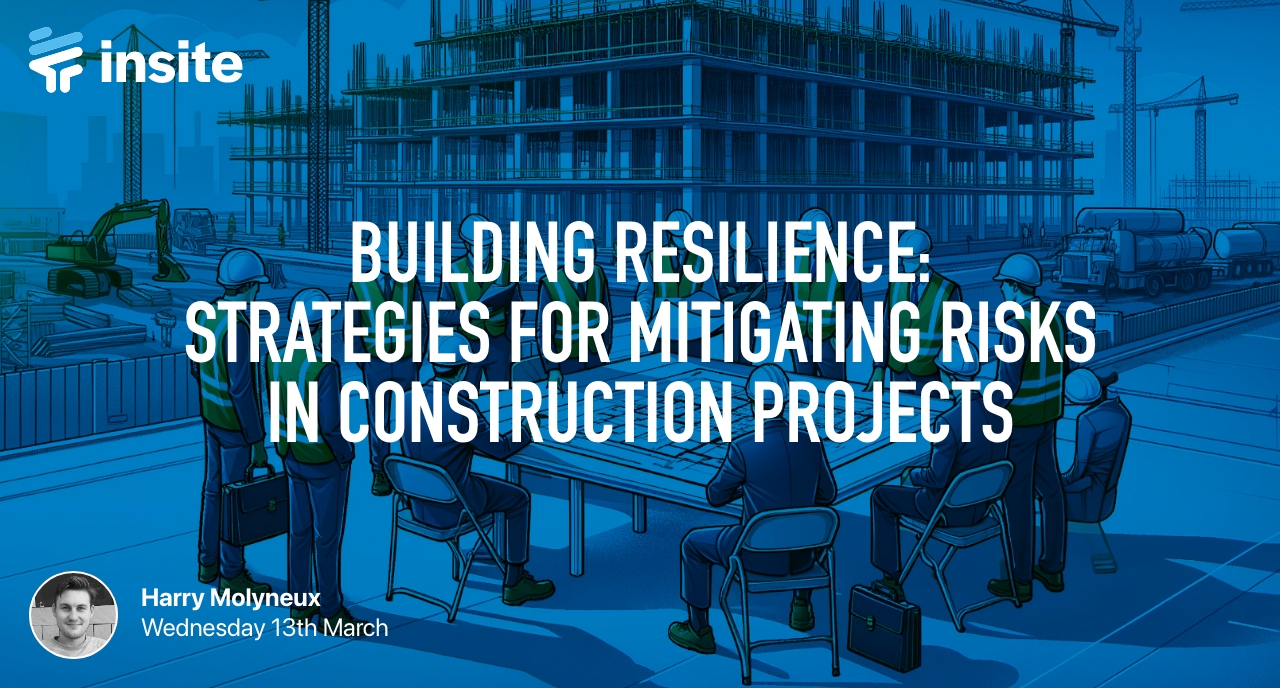Resources
Case studies
Videos
Sample reports
Free inspection templates
Learn
Blog
Product brochure
Training pack
Get the app
Download the app
Changelog
2024-03-13 | 4 min read
tags: Risk Innovation Insite
Building Resilience: Strategies for Mitigating Risks in Construction Projects

Introduction
In the high-stakes world of construction, managing risk is not just a precaution; it’s a necessity. The journey from blueprint to building is fraught with uncertainties that can derail even the most meticulously planned projects. Unmanaged risks can lead to project delays, cost overruns, and, in the worst cases, compromise worker safety. However, by embracing strategic risk mitigation, construction professionals can not only safeguard their projects against potential pitfalls but also strengthen their resilience against unforeseen challenges. This introduction to risk management underscores its pivotal role in construction, setting the stage for a deeper dive into how leveraging technology, particularly construction project management software, can transform risk into reward.

Understanding Construction Risks
Types of risk
Construction projects are complex, dynamic environments where risk is a constant companion. These risks can be broadly categorised into financial, operational, environmental, and safety risks. Financial risks encompass budget overruns and unforeseen costs, while operational risks deal with the challenges of keeping a project on schedule and within scope. Environmental risks include natural disasters and adverse weather conditions that can unexpectedly disrupt progress. Lastly, safety risks highlight the potential for accidents and injuries on site, underscoring the need for rigorous adherence to safety protocols. Utilising construction project management software can significantly mitigate these risks by improving planning accuracy and enhancing safety protocol adherence.

Sources of Risks
Risks in construction can emerge from both internal and external sources. Internally, miscommunication, poor planning, and inadequate resource management can introduce significant vulnerabilities. Externally, regulatory changes, economic fluctuations, and supply chain disruptions can pose challenges. Understanding these risks’ origins is crucial for developing effective mitigation strategies, utilising tools like facilities management software and maintenance management systems to manage and mitigate these risks proactively.
The Pillars of Effective Risk Management
Risk Identification
Early detection of potential risks is essential for successful risk management. Techniques such as regular site audits, stakeholder meetings, and utilising advanced analytics can help identify risks before they become critical issues. Construction project management software plays a crucial role here, offering tools for real-time monitoring and reporting that keep all stakeholders informed and alert to potential risks.
Risk Analysis
Once risks are identified, they must be analysed to determine their potential impact and likelihood. This analysis helps prioritise risks, focusing attention and resources on the most significant threats. Facilities management software can aid in this process by providing detailed data on asset conditions and maintenance histories, helping project managers forecast potential issues before they arise.

Risk Response Planning
Developing strategies to manage identified risks is the next step. Options include risk avoidance, mitigation, transfer, or acceptance, depending on the risk’s nature and severity. A maintenance management system is invaluable in implementing risk mitigation strategies, especially for operational risks, by ensuring that all equipment and machinery are maintained in peak condition to avoid downtime or safety incidents.
Integrating Insite for Comprehensive Risk Mitigation
Centralised Project Management
Insite serves as a pivotal tool for enhancing visibility and control over construction projects. By offering a centralised platform for project data, Insite helps manage risks more effectively, ensuring that every team member has access to the latest information and can make informed decisions promptly.
Real-Time Communication and Collaboration
The ability to communicate and collaborate in real-time is crucial for mitigating risks as they arise. Insite’s suite of tools enhances team coordination, enabling quick responses to emerging challenges and ensuring that all stakeholders can work together efficiently to address potential issues.

Safety and Compliance
Adhering to safety standards and regulatory compliance is non-negotiable in construction. Insite supports these efforts by providing tools for regular safety audits, compliance tracking, and incident reporting, helping maintain a safe work environment and mitigate safety risks effectively.
Conclusion
Strategic risk management, empowered by technology, is key to navigating the complexities of modern construction projects. Insite, alongside facilities management software and maintenance management systems, offers a robust toolkit for managing and mitigating risks, ensuring project success. The inclusion of a maintenance management system further enhances this toolkit, ensuring that all aspects of equipment and facility maintenance are addressed, preventing operational delays and maintaining safety standards.
Get started with Insite
If you’re looking for a solution, Insite is here for you. Book a demo or sign up for a trial today. Get in contact for further information we’re here to help and will be happy to answer any questions you may have.